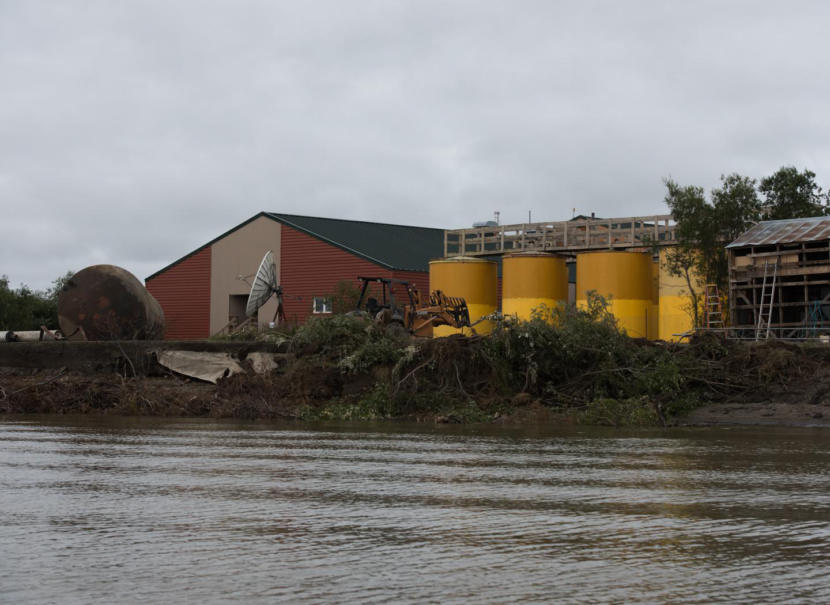
The erosion at Napakiak is accelerating.
Last week, the community gathered to discuss retreating or relocating entirely. At that meeting, a representative from the Lower Kuskokwim School District stood up and said repeatedly that LKSD would not let the school’s fuel tanks fall into the river.
When asked if that was a statement he could support, LKSD Superintendent Dan Walker responded, “Well, we will do our absolute best. We just simply can’t have that level of disaster take place.”
The school district is sending three fuel tanks to Napakiak, hopefully before freeze up. The tanks will sit in the school parking lot. When spring comes, they’ll transfer the fuel from the old tanks into the new tanks. The new tanks aren’t large enough to hold all the fuel that’s currently in the old tanks, and with less fuel there will be a lower risk of spilling.
That’s the school district’s plan, but no one knows what the river will do, and it’s anyone’s guess as to how close it will be to the tanks by spring. The school district has known about the erosion since 1996, but that erosion has been rapid in recent years.
In early August, a school employee measured 48 feet between the river and the fuel tank fence. Winter freeze-up could buy the school district time, but the fall storm season is looming.
LKSD personnel haven’t yet decided how close they’ll let the river get to the tanks before they’ll need to be emptied.
“But I suspect the Coast Guard is going to help us come to that decision,” Walker said.
The U.S. Coast Guard arrived in Napakiak on Thursday to inspect the situation.
The school district has thought about putting up barriers to slow the erosion, but it can’t use school money on non-school property. The community has already tried this approach by using sandbags, tarps, and willows. Nothing has worked.
The school district does have a back-up strategy. In an emergency, they will transfer fuel into a Napakiak Corporation fuel tank and put the rest in temporary containers, which have not yet arrived in Napakiak.
There’s also the question of what to do with the soil surrounding the tanks and if that needs to be cleaned before the river reaches it. There are no records of fuel spills at the site, but the school has been there since 1973.
Superintendent Walker describes the situation as “urgent” and “an emergency,” but when action will happen at the site remains undetermined.
“I’m sorry. There’s just not a real hard and fast answer to those things,” he said. “And part of it is the process and the unknowns that we have. A lot of it is dependent on the pace of that erosion.”
Cleaning the soil requires help from the Alaska Department of Environmental Conservation. The Alaska Department of Education and Early Development holds the money for school construction, and the state’s legislature did not appropriate any funding for Napakiak this year. LKSD has not applied for other sources of funding.
LKSD does have a piggy bank though. Inside is enough to get several projects started, like building a temporary fuel tank site, taking down the old tanks, and even designing a new school.
The Napakiak school sits right behind the fuel tanks. Neither the school district nor the state’s Department of Education and Early Development has regulations on how close a river can get to a school before the building shuts down. Superintendent Walker says that the district will most likely close one wing of the school and bring in temporary classrooms if the river gets too close.
